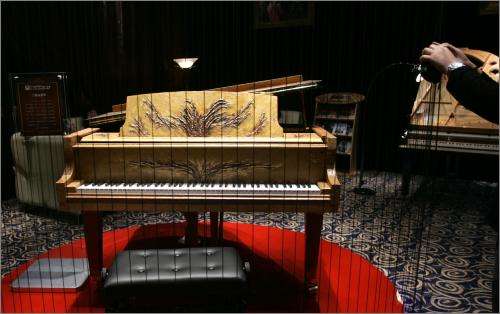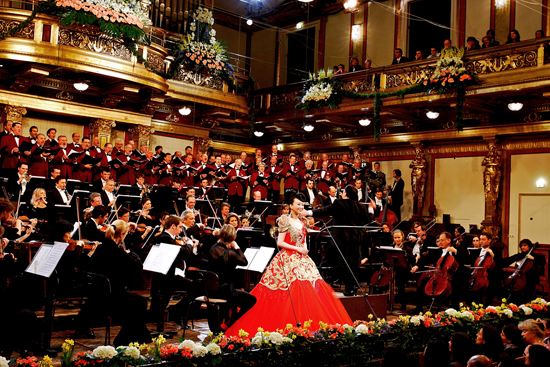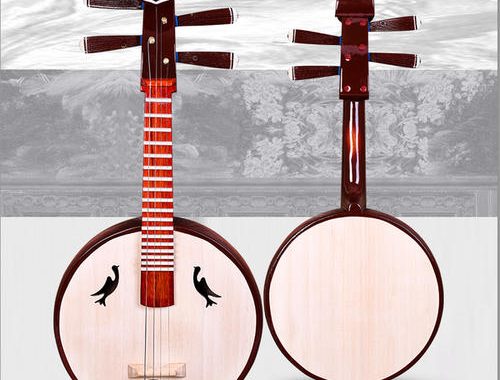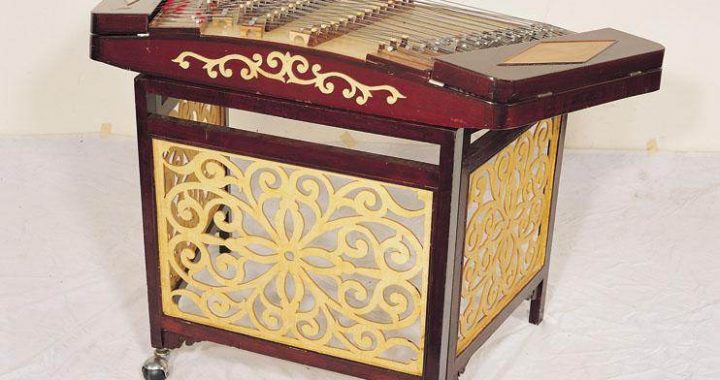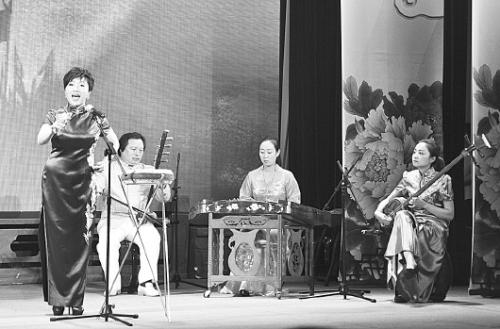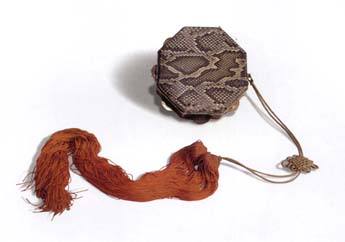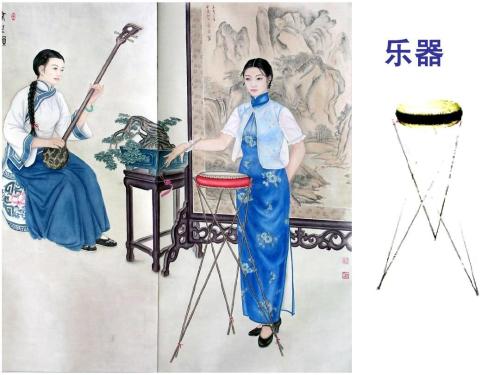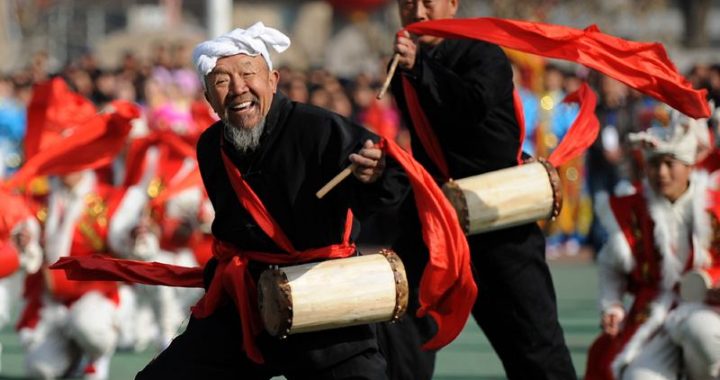Each instrument
4 min readis constructed of thirteen graduated pipes, bound and inserted into a three-piece bamboo body. The entire instrument is coated with black lacquer and decorated with delicate red lines and geometric patterns.
Even before being dried out, eight of the pipes could produce musical tones, indicating that these instru-ments were capable of producing a six-tone scale. Although no Han Dynasty examples of paixiao have yet been discovered, pottery figurines from this period, such as the Jiyuan musical figurines, convey a general idea of their appearance. This group of seven figurines, excavated in 1969 from a Han Dynasty tomb in Sijiangou, Jiyuan, Henan Province, consists of two dancers, four musicians, and one conductor. The paix-iao held by one of the musicians is almost identical to that unearthed from pre-Jin tombs.

During the Han Dynasty, thejia (pipe) andjiao (horn) were primary instruments of the percussion and wind music of western China. Today, the jia no longer exists. Historical records concerning the con-struction of the ancientjia (pipe) are fairly vague. The first such instrument probably consisted of rolled-up reed leaves that were blown to produce sound. Later jia consisted of wooden tubes played with reed mouthpieces. The jia played in Han Dynasty percussion and wind music was of this sort. It is likely that the various types of Chinese pipes popular today evolved from thejia. It can be seen from Han Dynasty tomb engravings that thejiao (horn) of this period was very large, fabricated from various materials rather than using natural animal horn. Due to their loud and imposing sound, the horn and drurn were used in war early in Chinese history, and occupied an important place in martial music. The Chinese saying, “The horn and drum sound off together” indicates the close relationship of these two instruments. The drum is also very important to music making. The collection of the Sichuan Provincial Museum contains a figurine of a singer-storyteller, excavated in Pi County in 19 63. The well-preserved, 66.5 -centimeter-tall figurine is of a person of small stature, playing a drum and singing. Bare-chested, he is short and fat with a large pro-truding belly. He holds a small round drum in his left hand, and strikes it with a drumstick held in his right hand. Tongue protruding from his crooked mouth, his jocular expression indicates that he is in the midst of a rousing performance.

Figurine of singer-storyteller with drum from Pi County, Sichuan Province These rare and valuable ancient artifacts offer a vivid representation of Chinese musical instruments and performers as they existed over 2000 years ago.
Red carpet performances: the rise of musical instruments during the Sui-Tang period China’s Sui-Tang period (5 81-907 AD) was a time of brilliant achievements in Chinese musical culture,with great strides made in both playing techniques and instrument construction. Musical exchange be-tween East and West, as well as creative collaboration among China’s various ethnic groups, stimulated the development of numerous new musical instruments. Historical records indicate that over 300 different instruments were in use during the Tang Dynasty (618-907 AD), including the pipa (lute), konghou (harp),guqin (ancient qin), sheng (reed pipes), di (flute),fangxiang (xylophone) andjiegu (drum). In addition to in-struments unearthed from archeological sites, numerous examples from this period have also been passed down to the present day in excellent condition. The collection of the Nara National Museum in Japan includes a number of musical instruments and musical artifacts from Tang Dynasty China that are over 1200 years old, representing an extremely valuable historical inheritance.

Pipa (lutes) from the collection of the Nara National Museum, Japan The pipa (lute) was a very important plucked string instrument of the Sui-Tang period.
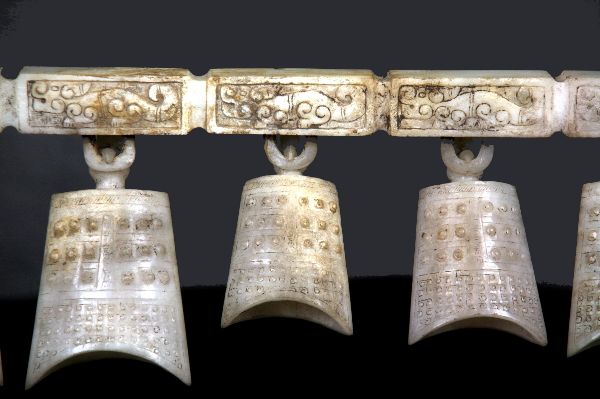
The bent-neck pipa and five-string pipa, with origins in the Middle East’s Fertile Crescent, was introduced to China via the ancient Silk Road in the 4th century AD. The bent-neck pipa has a pear-shaped body and bent neck, four strings, and four frets. It is held horizontally and played with a pick. The five-string pipa is somewhat smaller, with a pear-shaped body and five strings. Both types of pipa were very popular during the Sui-Tang period. Several examples of Tang Dynasty bent-neck pipa and five-string pipa are included in the collection of the Nara National Museum in Japan. Among these are a bent-neck pipa with a short neck and beautiful mother-of-pearl inlay on the back and sides, and a five-string pipa with a long straight neck and mother-of-pearl inlay. The bent-neck pipa and five-string pipa continued to evolve after the Tang-Song period (618-12 76 AD), eventually merging into a single instrument — the traditional Chinese pipa as it is known today. Over the course of more than one thousand years, advanced playing techniques and an extensive body of music for the pipa have been developed. Despite its foreign origins, the pipa has become one of China’s most representative musical instruments. The modern pipa has a clear and bright tone and a range generally extending from A to e3. It is often used for solo performances, as well as for accompanying singers, vocal entertainments, traditional opera, and musical drama. It also appears in instrumental duets and ensembles.
